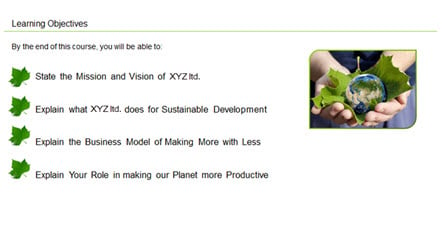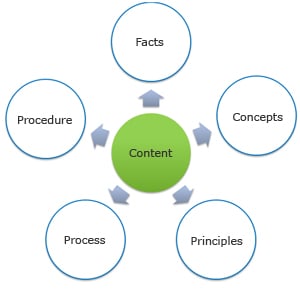5 Elements of Instructional Designing for eLearning

Let me ask you a question.
Do you know when the process of designing training course materials started?
Think!!!
The process of designing started in the early 1900s; during those days, it was in the initial stage but in the 1940s military personnel wanted an effective training material that was based on the principles of instruction and behavior of a human. The test was basically to screen human ability and it was successful.
→ Download Now: Instructional Design 101
The field of psychology then used the training system to develop procedures such as analysis, design and evaluation. Since then, the drive to develop more training eLearning courses intensified. This led to the development of e-tools, which are an easily accessible tool for learners. “ATI” anytime information just like an ATM.
It is a process through which learning needs can be analyzed, and a delivery system is developed to meet these needs. The most important point in this process is the source, a plan, organizing it, and an effective custom eLearning course design.

Five Effective Elements of Instructional Designing
5 Effective Elements of Instructional Designing
- Understand learner characteristics
- Set learning objectives
- Sequence objectives and content
- Present content effectively
- Assess learner performance
1. To understand the characteristics of a learner:
While creating a eLearning course, instructional design principles emphasize tailoring content to different sets of learners. For instance, adults are always curious about why they should learn something and they also prefer to be self-directed. So it is very important to bear this fact in mind when designing a eLearning course for adult learners. Likewise, designing the eLearning course for children is not the same as for adults because children are always dependent on the method of explanation.
2. Set learning objectives for eLearning:
The most important point is that by the end of the eLearning course the learner should be able to clearly assess himself. The objective goes through a process that includes performance, preferred conditions and specific criteria. Objectives that are well defined help in selecting proper content, kind of methods, media and assessments.
Discover what’s the key to framing effective learning objectives!
Here is a screen shot that shows how to set the learning objectives for the eLearning course.

3. Arrange the learning objectives and eLearning content in a sequence:
According to Wikipedia, assessments implement a systematic way of gathering, analyzing, and interpreting evidence to determine how well learning matches expectations, and uses the collected information to give feedback on the improvement of learners' learning.
Extensive content is invariably available in different books, websites, journals, presentations, videos so on and so forth. Based on the learning objectives, the content can be collected and the most important point is to arrange it and prepare a list of topics and sub-topics and to know the proper way of sequencing the objectives and content you should consult a Subject Matter Expert (SME). The content has to be classified into the types — facts, concepts, principles, process and procedure. Employ instructional design models such as Gagne’s Nine Events of Instruction to structure content delivery effectively.
Here is a screen shot that shows Content that is classified into the different types: facts, concepts, process, procedures and principles.

4. Presentation patterns:
After the three elements, that is, understanding the learner, setting objective and then the sequentially arranging the objectives and content, the most important point is to decide the presentation patterns for the content. It includes pre-determined activity, presentation, assessments and learners’ feedback. Chunking information into easy-to-understand bits encourages learners to take up the eLearning course. In the process of feedback with reasons, for all answers that are just a “yes” or “no” the reasons should be specified or explained clearly. While designing eLearning courses, focus should be on individuals rather than on groups so that the instructional design process will be more effective.
Unlock the secrets to captivating eLearning courses with tips to design perfect storyboards.
5. To assess the performance of the learner:
To know whether the learner has understood the eLearning course, you can choose pre-test or either of formative or summative evaluation criteria. eLearning assessments with appropriate feedback is very essential at the end of the eLearning course because learners can get an idea of their knowledge levels and decide whether to take on more eLearning course to enhance their skills.
Let’s understand more about eLearning assessments. Here is an insightful infographic!
The above “five elements of instructional designing” can help you to create an instructionally interactive custom eLearning course rather than a passive one. For more insights on instructional design, check out our detailed guide.







